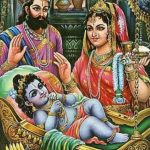Gir Cow now records over 62 litres/day in Brazil…
Brazil is the biggest exporter of Indian breeds of cows. Gir cow now records over 62 litres/day in Brazil..
- Devinder Sharma, Agriculture Expert

This majestic cow is from Brazil. Belonging to the Gir breed of Gujarat, this cow — named Shera — clocked 62.033 litres of milk in a 3-day milk competition at the 40th Expaja in Brazil, beating her own record of 59.947 litres.
On our visit to Malaysia, we were intrigued when we came across a cattle breed, which the farmers kept referring to as “the Brahman”. This was a complete mystery to us. Which Brahman came to Malaysia and named these cattlethe Brahman?”
“On our visit to the government’s Department of Veterinary Services in the state of Selangor we saw photographs of the Grey Brahman, the Red Brahman and the Nellore—all part of a poster on cattle breeds of Malaysia. Not to mention that the Jamunapari goat also featured in the poster as a goat breed of the country. This intrigued us even further, but none of the veterinary officers could explain how the Nellore from Andhra Pradesh and the Jamunapari from Uttar Pradesh happened to figure in a poster on the breeds of Malaysia.“
She came back and researched. “Brahman breed is a product of biopiracy of severalIndian breeds, which occurred over 100 years ago, when India was a colony of the British Empire, when “pirates” of today’s “Empire”—and modern day “Brahman”, the US—spirited out a nucleus of approximately 266 bulls and 22 females of several Bos indicus (Indian cattle), imported them to the US between 1854 and 1926, and developed the breed.
According to the literature, the Brahman is the progeny of four Indian cattle breeds: the Kankrej and Gir from Gujarat, the Ongole (earlier known as the Nellore) from Andhra Pradesh, with the fourth breed being the “Gujarat”. But no such breed exists in the list of Indian cattle breeds.
The Brahman has become the most popular beef cattle breed in the southern parts of the US and in South America, Asia, and Australia because of its excellent adaptability to sub-tropical climates and its production abilities.
Brahman-type cattle were, in fact, imported to Australia from the US, and today the Australian Brahman is the mainstay of the northern beef industry of Australia. The Brahman in Malaysia has primarily been imported from Australia, which has a virtual monopoly in exporting the breed to several south-east Asian countries. So much so that Malaysia’s beef cattle industry is completely dependent on continued import of the Brahman from Australia [You can read the full article The loss of our breeds, Down to Earth, 2012-7-15. http://www.downtoearth.org.in/
This brings me back to the question I have been asking again and again. When will we begin to recognise our desi breeds of cows? Why is it that planners are averse to our own domestic breeds?
What is also little know is the fact that Indian cows and buffaloes produce a more nutritious milk than the exotic breeds like Jersey and Holstein-Friesian. A recent study by Karnal-based National Bureau of Animal Genetic Resources (NBAGR) showed Indian cows have a rich A2 allele gene which helps them produce healthier milk. The frequency of this A2 allele in Indian breeds is 100 per cent whereas in exotic cattle breeds it is less than 60 per cent. Imported breeds posses A1 allele, which is considered to be associated with diabetes, obesity and cardiovascular diseases [Indian Cow, Buffalo breeds give healthier milk. http://news.outlookindia.com/items.aspx?artid=725938].
Why do we want the future generations to be sick with lifestyle diseases?
=========
Devinder Sharma, Agriculture Expert
http://devinder-sharma.blogspot.in/
hunger55@gmail.com









